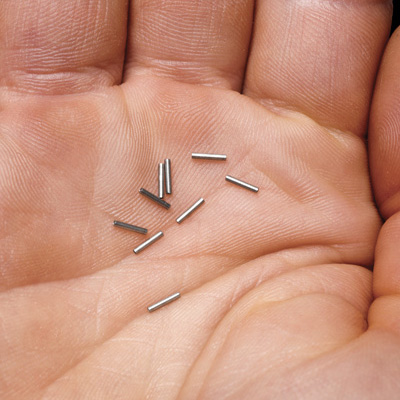What is Prostate Brachytherapy?
There are two main types of prostate brachytherapy: low dose rate (LDR) and high dose rate (HDR).
LDR Brachytherapy
Low Dose Rate (LDR) brachytherapy can be thought of as ‘take-away’ radiation. Small radioactive ‘seeds’ are permanently implanted near or in the tumour. These stay permanently in place, releasing small amounts of radiation over several weeks or months. Most commonly in Australia and New Zealand, this technique is used for treating localised prostate cancers. Men can get back to their usual activities within a day or two of having the ‘seeds’ inserted.
HDR Brachytherapy
High Dose Rate (HDR) brachytherapy is based on similar principles to that of low dose rate brachytherapy but the delivery is a bit different. Firstly, the radioactive sources are removed from the patient at the end of each treatment session. Secondly, the radiation sources deliver a more intense but short-lived dose of radiation during each of several (usually 1–3) sessions. HDR brachytherapy is used for more high-risk but localised prostate cancers and gynaecological cancers, amongst others. HDR brachytherapy is often given in conjunction with External Beam Radiation Therapy (EBRT).
How big are the radioactive seeds?
The seeds that are used are approximately 4.5mm long and 0.8mm in diameter.

Who is eligible for brachytherapy?
A recent webinar presentation by Dr David Malouf and Dr Joseph Bucci describing the role of brachytherapy in the management of prostate cancer.
Prostate Brachytherapy vs. Prostate Surgery: How effective is it?
Prostate brachytherapy is clinically proven to be as effective as prostate surgery in terms of managing the disease.
Dr David Malouf trained in Australian and then undertook sub-specialised training in Seattle, USA at the Prostate Cancer Institute and has been performing brachytherapy in Australia since 2001.
Dr Malouf is part of a multidisciplinary team which includes radiation oncologists Dr Joseph Bucci, Dr Yaw Chin and Dr Nadine Beydoun and medical physicist Mr Ese Enari.
Click here to download a comprehensive patient information booklet regarding Prostate Bracytherapy.
Brachytherapy treatments are performed at Hurstville Private Hospital, St George Private Hospital and St George Hospital, which is the only public hospital brachytherapy program in NSW.
The cost of treatment depends upon your choice of hospital and whether or not you hold private health insurance.
Patients have the choice of being treated under Medicare arrangements at St George Public Hospital. If patients choose to be treated in a private hospital, there may be out of pocket expenses.
Dr Malouf’s team will be able to provide details on the likely costs. Please contact us and we will be able to assist.
- Radiation Oncology – Targeting Cancer
- What is Brachytherapy and How Effective is it for Prostate Cancer [Video] – Interview with Prof Jeremy Millar (Director, Radiation Oncology – Alfred Health)
